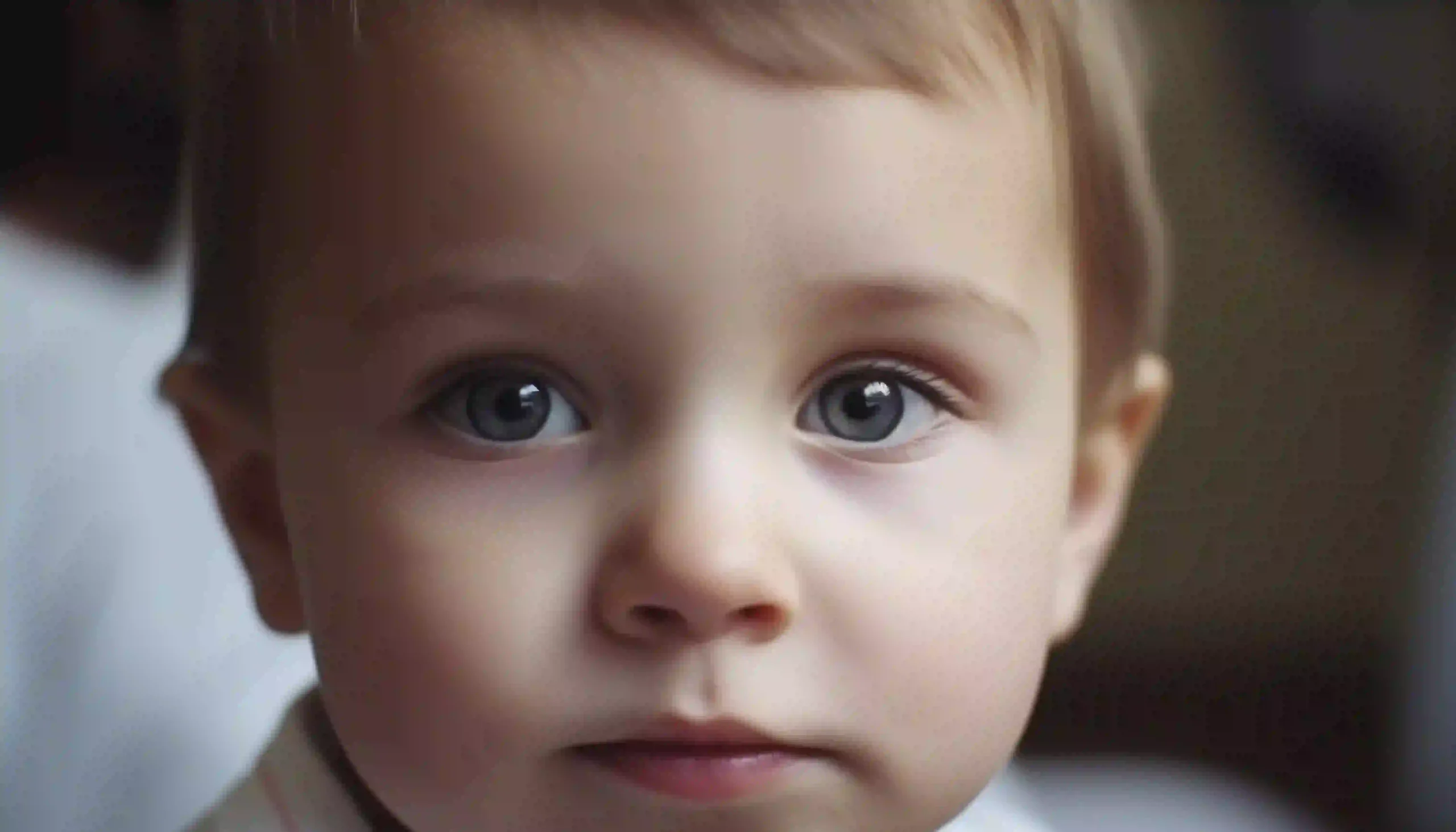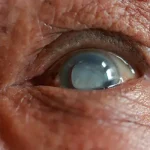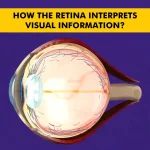Summary: Congenital cataract refers to the clouding of the eye’s lens present at birth or developing shortly after. This condition can affect one or both eyes and, if untreated, may lead to permanent vision loss. Early diagnosis and timely treatment, including surgery or visual rehabilitation, are essential to preserve healthy vision and support normal eye development.
|
Key Takeaways:
|
Introduction:
Congenital cataract refers to the clouding of the eye’s lens that is present at birth or develops shortly after. The lens, which is normally clear, is crucial in focusing light onto the retina for clear vision. When cataracts form, they can interfere with this process, leading to blurry or obstructed vision. Depending on severity, congenital cataracts can affect one or both eyes (unilateral or bilateral) and may require medical intervention to prevent long-term visual impairment. Early detection and timely treatment are crucial for the best possible visual outcomes.
Classification of Congenital Cataract
The classification of congenital cataracts is based on various factors, including its location, extent, and impact on vision. The main categories include:
- Unilateral vs. Bilateral Cataract: Unilateral cataracts affect one eye, while bilateral cataracts impact both eyes.
- Partial vs. Total Cataract: Partial cataracts only cloud a portion of the lens, whereas total cataracts involve the entire lens.
- Progressive vs. Non-progressive Cataract: Some cataracts worsen over time, requiring treatment, while others remain stable.
Congenital Cataract Types
Congenital cataracts are further classified based on their specific location within the lens. The most common type of congenital cataract is the lamellar cataract (zonular), which affects specific layers of the lens and is often associated with genetic inheritance.
- Nuclear Cataract: Affects the central portion of the lens and may lead to significant visual impairment.
- Lamellar (Zonular) Cataract: Involves specific layers of the lens, commonly associated with genetic inheritance.
- Sutural Cataract: Affects the Y-shaped sutures of the lens and maybe symmetrical in both eyes.
- Polar Cataract: Found at the anterior or posterior pole of the lens, sometimes linked to genetic mutations.
- Total Cataract: The entire lens is affected, leading to complete opacity and severe vision loss.
Congenital cataracts are relatively rare, but understanding how common are congenital cataracts helps highlight the importance of early screening and intervention, especially in newborns at risk. Read more about the different types of cataracts.
Causes of Congenital Cataract
Most common causes of congenital cataract vary and may be influenced by genetic, infectious, or metabolic factors. Common congenital cataract causes include:
- Genetic Factors: Inherited mutations affecting lens development.
- Intrauterine Infections: Maternal infections such as rubella, toxoplasmosis, syphilis, or cytomegalovirus during pregnancy can lead to cataracts in newborns.
- Metabolic Disorders: Conditions such as galactosemia and hypocalcemia can interfere with normal lens metabolism.
- Chromosomal Abnormalities: Syndromes like Down syndrome and Turner syndrome often include congenital cataracts as a feature.
- Drug Exposure or Radiation: Certain medications and radiation exposure during pregnancy can disrupt fetal eye development.
Symptoms of Congenital Cataract
Early detection of congenital cataract symptoms is crucial for effective management. Symptoms may include:
- Cloudy or whitish appearance of the lens: A key sign that may be visible upon examination.
- Difficulty in focusing on objects: Infants may struggle to fixate on faces or moving objects.
- Nystagmus (Involuntary Eye Movements): Rapid, uncoordinated eye movements may indicate visual impairment.
- Poor Visual Tracking: The baby may not follow lights or objects as expected.
- Strabismus (Misaligned Eyes): Misalignment of the eyes may develop due to poor vision in one or both eyes.
Complications of Congenital Cataract
If left untreated, congenital cataracts can lead to several complications, including:
- Amblyopia (Lazy Eye): Reduced vision development due to lack of proper visual stimulation.
- Strabismus: Eye misalignment caused by improper visual signals.
- Glaucoma: Increased intraocular pressure, which can cause further damage to the eye.
- Permanent Vision Loss: Delayed treatment may result in irreversible vision impairment.
Diagnosis of Congenital Cataract
A thorough eye examination is essential to diagnose congenital cataract and determine its cause. Diagnostic methods include clinical assessment and tests that help identify similar eye conditions, forming part of the congenital cataract differential diagnosis process.
- Red Reflex Test: A simple screening test where a bright light is shone into the eye to check for lens opacities.
- Ophthalmoscopy: A detailed examination of the eye’s internal structures.
- Ultrasound Imaging: Used when the lens opacity is too dense to allow visualization of the retina.
- Genetic and Metabolic Testing: Recommended when hereditary or metabolic disorders are suspected.
The timing of treatment is critical, and the recommended congenital cataract surgery age often depends on cataract severity, with many cases requiring surgical correction within the first few months of life to ensure proper visual development.
Treatment for Congenital Cataract
The appropriate congenital cataract treatment depends on its severity and impact on vision. Treatment options include:
- Observation: Regular monitoring may be recommended in cases where the cataract does not significantly affect vision.
- Surgical Removal: If vision is impaired, cataract extraction is performed to remove the cloudy lens.
- Intraocular Lens (IOL) Implantation: In some cases, an artificial lens is implanted after cataract removal to restore vision.
- Contact Lenses or Glasses: Used post-surgery if IOL implantation is not suitable.
- Vision Therapy: To aid visual development, especially in young children with amblyopia.
Prognosis
The prognosis for congenital cataract depends on the severity, timing of treatment, and presence of associated conditions. Early intervention can lead to good visual outcomes, but long-term follow-ups are essential to monitor vision development and prevent complications.
Conclusion
Congenital cataract is a serious eye condition requiring prompt diagnosis and intervention. While some cases may not require immediate treatment, others necessitate surgical correction to prevent long-term vision impairment. Parents and caregivers should seek medical attention if any signs of congenital cataracts are noticed in a newborn.
Ensure your child’s eye health with early diagnosis and treatment. Schedule an Eye Exam Today!
FAQs
What’s the primary cause of congenital cataracts?
The primary cause of congenital cataracts is often genetic mutations or abnormalities that affect the development of the eye lens during fetal growth. Additionally, factors such as maternal infections, metabolic disorders, or certain medications taken during pregnancy can contribute to the development of congenital cataracts in some cases.
Are congenital cataracts always present from birth?
Yes, congenital cataracts are present from birth. They develop in the lens of the eye during fetal development and can affect vision if not treated promptly.
Is congenital cataract a disability?
Congenital cataracts can result in visual impairment, potentially leading to disability. However, the impact varies based on factors like the severity of the cataract, timely intervention, and the effectiveness of treatments.
Are there non-surgical treatments for congenital cataracts?
Surgery is the primary treatment for congenital cataracts. Non-surgical alternatives are limited, but corrective lenses like glasses or contact lenses may be used to improve vision in some cases.
How common are congenital cataracts among newborns?
Congenital cataracts are rare, affecting approximately 1 to 6 newborns per 10,000. Early detection and intervention are crucial for optimal visual outcomes in affected infants.
What is the most common cause of congenital cataracts?
The most common cause is genetic mutations. Additionally, congenital cataracts can result from maternal infections, metabolic disorders, or exposure to certain medications or toxins during pregnancy.
How common are congenital cataracts?
Congenital cataracts are relatively rare, occurring in approximately 1 to 15 cases per 10,000 births. The incidence varies based on genetic and environmental factors.
What is the most common type of congenital cataract?
The most common type of congenital cataract is lamellar (zonular) cataract, which affects specific lens layers and is often inherited.
Can congenital cataracts be prevented?
While some congenital cataracts are genetic and unavoidable, those linked to maternal infections or metabolic disorders may be preventable with proper prenatal care and vaccinations.
Is surgery always necessary for congenital cataracts?
Not always. Regular monitoring may be sufficient if the cataract does not significantly impact vision. Surgery is required when visual development is at risk.
What are the long-term effects of congenital cataract surgery?
Children who undergo cataract surgery may require corrective lenses and regular eye exams to monitor vision development and prevent complications.





